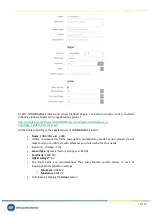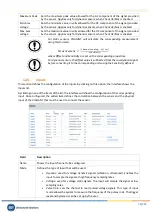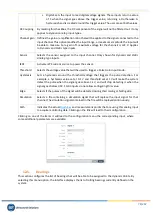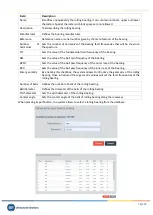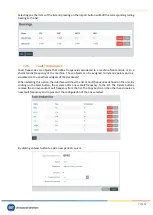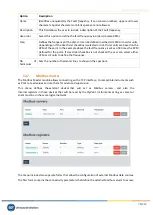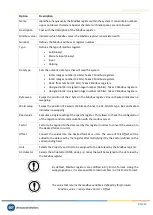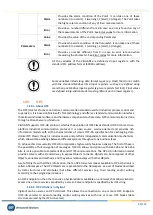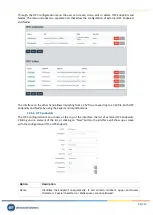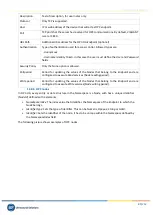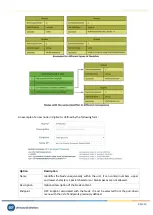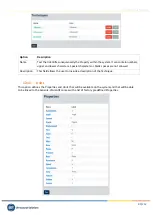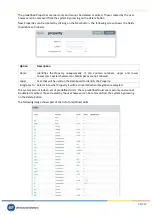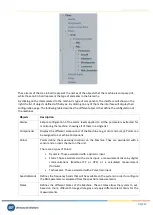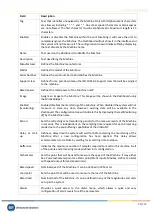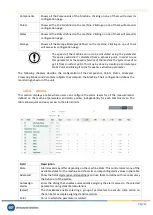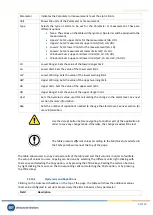
Vigilant User Manual
83/232
Alarm
Provides the alarm condition of the
Point
. It can take one of these
numbers: 0 (no alarm), 1 (warning), 2 (alert), 3 (danger). The
Point
takes
the higher alarm condition of any of their measurements.
Error
Provides a number different from 0 in case an error is found on any of
the measurements of the
Point
. See Error codes for more information.
Parameters
Value
Provides the value of the corresponding
Parameter
.
Alarm
Provides the alarm condition of the
Parameter
. It can take one of these
numbers: 0 (no alarm), 1 (warning), 2 (alert), 3 (danger).
Error
Provides a number different from 0 in case an error is found when
measuring the
Parameter
. See Error codes for more information.
All the variables of the VIGILANT are defined as Input registers, with the
standard PLC address format (30000+ address).
Some variables include long data format types (e.g. Float) that do not match
with the standard Modbus Int16 Input registers, so they are defined using
more than one Modbus Input register (e.g two registers for Float). Float values
are defined in big-endian mode (most significant part in lower register).
12.9.
OPC
12.9.1.
About OPC
The OPC (OLE for Process Control) is a communication standard used for industrial process control and
supervision. It is based on Microsoft’s OLE
technology and offers a standard communication interface
that allows individual software and hardware components to share data. OPC communication is done
through a Client-Server architecture.
VIGILANT supports OPC-UA protocol, which is the evolution of OPC Classic standard. OPC-UA is a cross-
platform industrial communication protocol. It is open source, service-oriented and provides rich
information models with all the characteristics of classic OPC-DA specification for exchanging data.
Unlike OPC Classic though it includes secure and platform independent communication mechanisms,
which allows data exchange between different systems throughout any business layer.
To achieve this transversality OPC-UA incorporates high-security features natively. The first of these is
the possibility of full encryption of messages. OPC UA allows encryption with AES-128 and AES-256
bits. It is also possible to implement SSL and HTTPS communications. The OPC-UA information model
provides servers with a standard way to expose
Objects
to clients.
Objects
can be composed of other
Objects
, variables and methods, and they allow relationships with other
Objects
.
A set of
Objects
, with all their information, that an OPC UA server makes available to OPC-UA clients is
called a
Namespace
. The OPC
Objects
are represented in the
Namespace
as a set of
Nodes
described
by data structures and attributes that allow different services (e.g. their reading and/or writing
according to the assigned permissions).
An OPC Endpoint on the other hand is a physical address available on a network that allows clients to
access one or more services provided by a server. Server endpoint is specified by its URL string.
12.9.2.
OPC UA client in Vigilant
Vigilant
can be used as an OPC-UA client. This allows the connection to one or more OPC
Endpoints
(OPC-UA servers) to execute reading and/or writing services with one or more OPC
Nodes
(data
structures served by the OPC-UA server).



